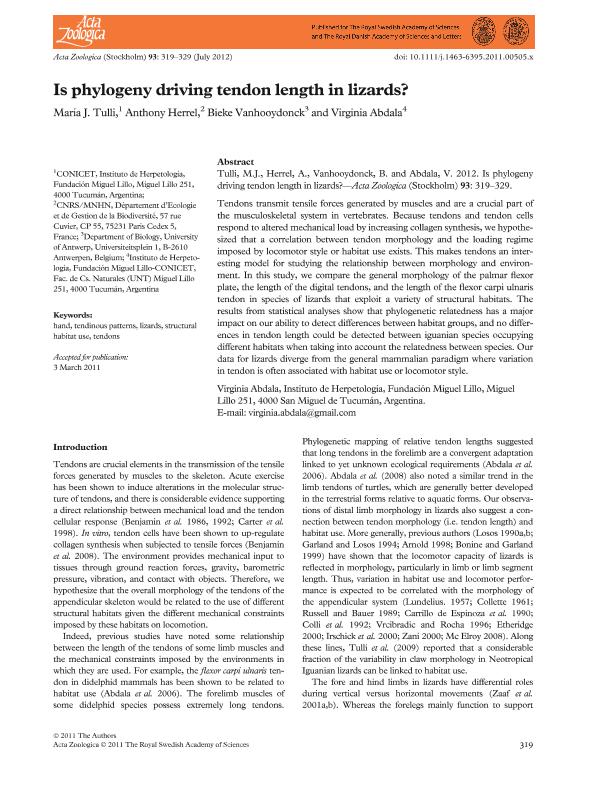Artículo
Is phylogeny driving tendon length in lizards?
Fecha de publicación:
07/2012
Editorial:
The Royal Swedish Academy of Sciences
Revista:
Acta Zoologica (Stockholm)
ISSN:
1463-6395
Idioma:
Inglés
Tipo de recurso:
Artículo publicado
Clasificación temática:
Resumen
Tendons transmit tensile forces generated by muscles and are a crucial part of the musculoskeletal system in vertebrates. Because tendons and tendon cells respond to altered mechanical load by increasing collagen synthesis, we hypothesized that a correlation between tendon morphology and the loading regime imposed by locomotor style or habitat use exists. This makes tendons an interesting model for studying the relationship between morphology and environment. In this study, we compare the general morphology of the palmar flexor plate, the length of the digital tendons, and the length of the flexor carpi ulnaris tendon in species of lizards that exploit a variety of structural habitats. The results from statistical analyses show that phylogenetic relatedness has a major impact on our ability to detect differences between habitat groups, and no differences in tendon length could be detected between iguanian species occupying different habitats when taking into account the relatedness between species. Our data for lizards diverge from the general mammalian paradigm where variation in tendon is often associated with habitat use or locomotor style.
Palabras clave:
Hand
,
Structural Habitat Use
,
Tendinous Patterns
,
Tendons
Archivos asociados
Licencia
Identificadores
Colecciones
Articulos(CCT - NOA SUR)
Articulos de CTRO.CIENTIFICO TECNOL.CONICET - NOA SUR
Articulos de CTRO.CIENTIFICO TECNOL.CONICET - NOA SUR
Citación
Tulli, María José; Herrel, Anthony; Vanhooydonck, Bieke; Abdala, Virginia Sara Luz; Is phylogeny driving tendon length in lizards?; The Royal Swedish Academy of Sciences; Acta Zoologica (Stockholm); 93; 3; 7-2012; 319-329
Compartir
Altmétricas




